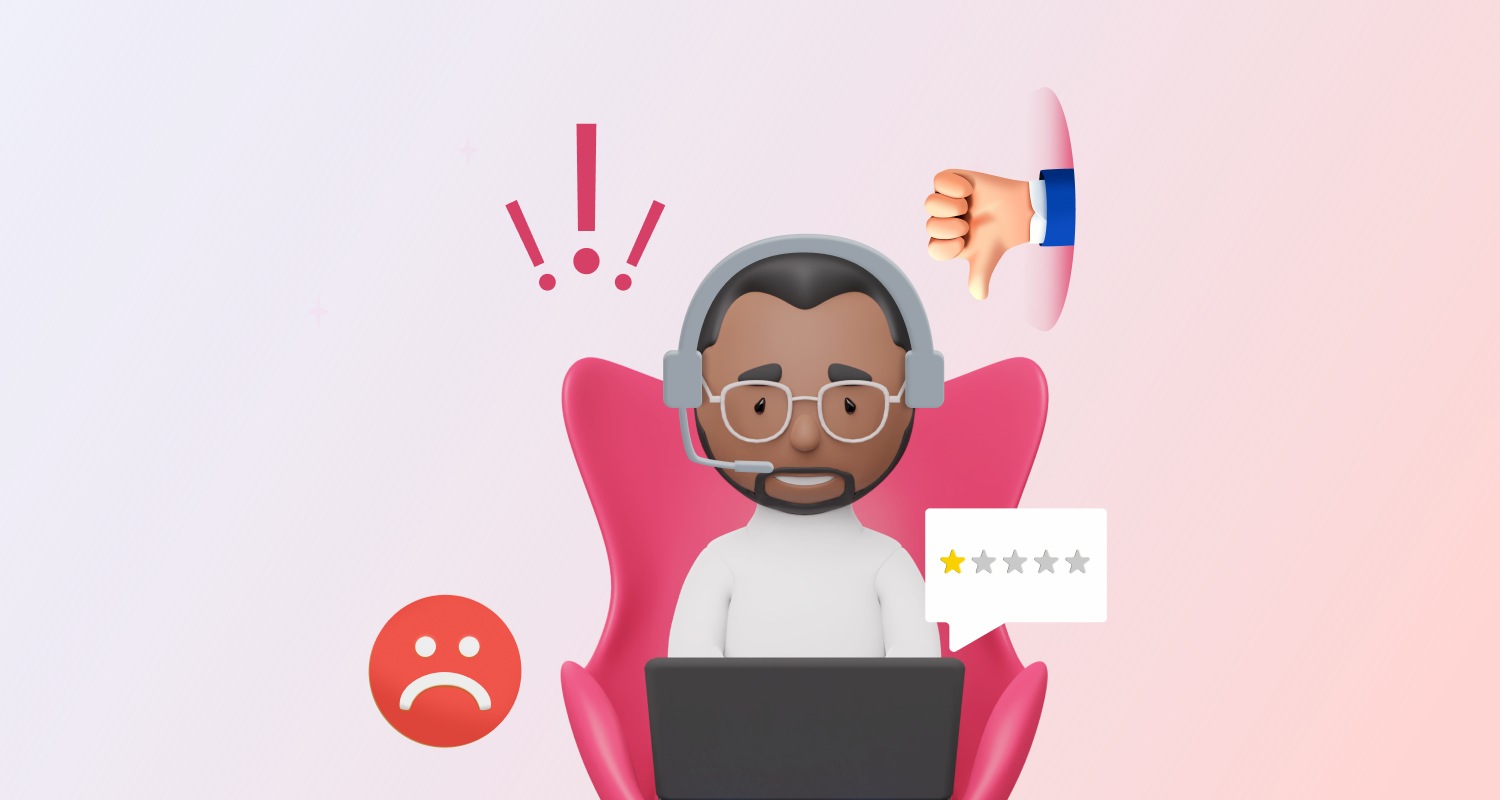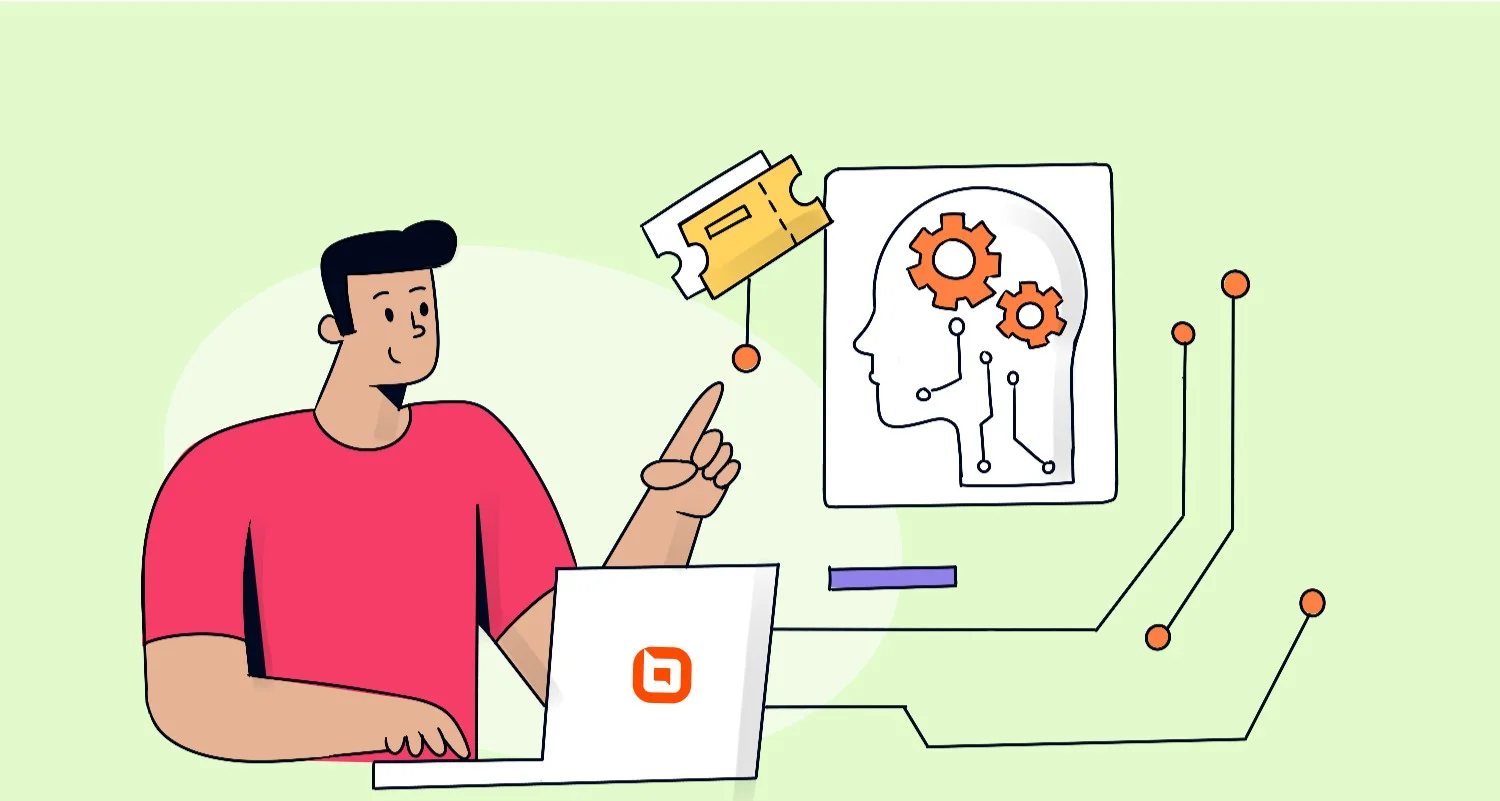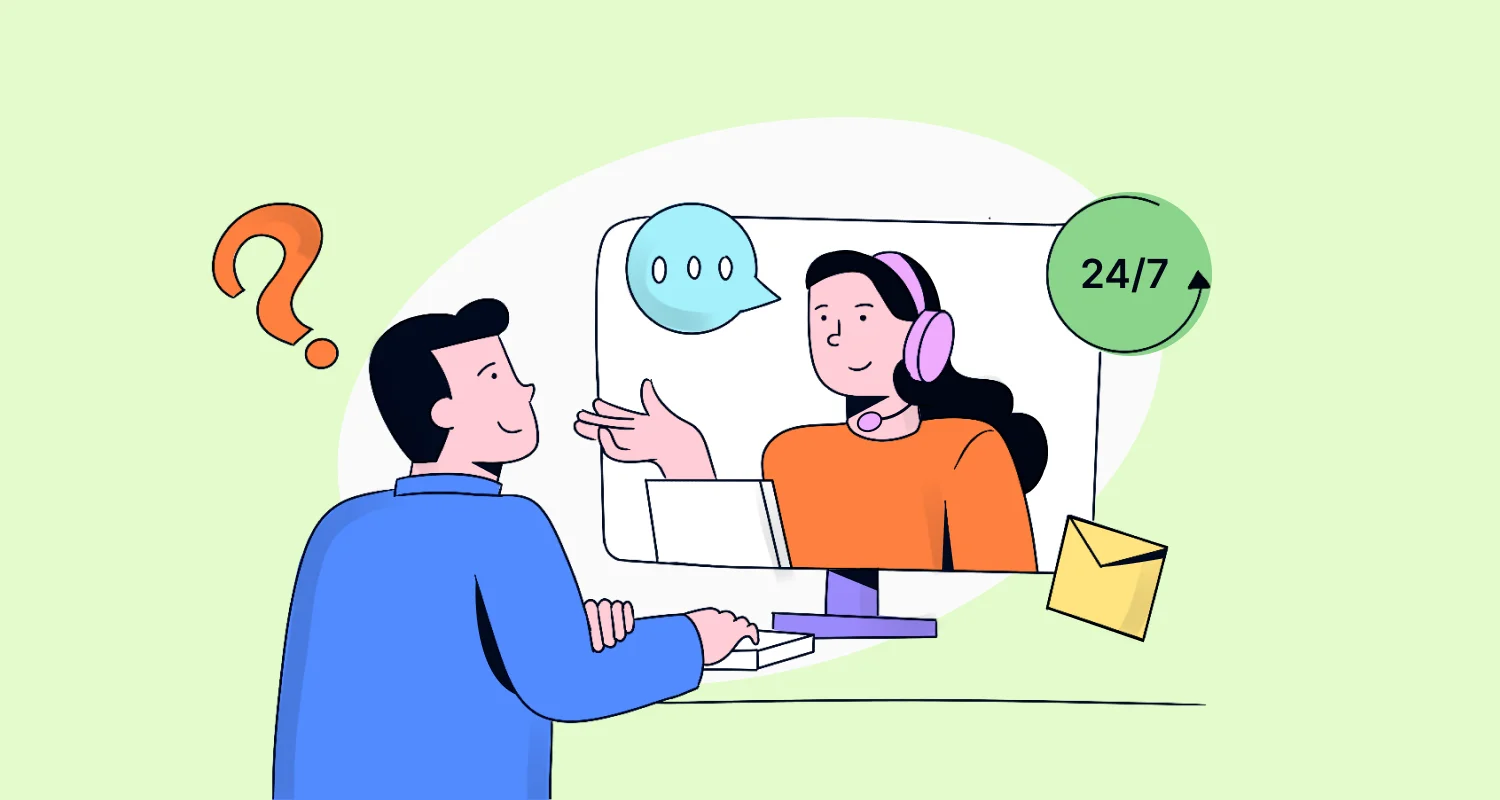In today’s tech-driven society, patience for bad customer service is low. Consumers have many options and quickly switch to competitors if the service they receive is poor.
Bad customer service results in negative customer experiences and dissatisfaction. This affects a company’s reputation and deters clients from using the same product or service in the future.
In this article we will delve into what bad customer service is, consequences of poor customer service, and examples of bad customer service.
What is bad customer service?
Bad customer service is the outcome of a company not fulfilling or meeting the needs and expectations of its customers.
According to Zippia, after one poor customer service experience, 91% of customers are ready to change companies.
Bad customer service can lead a decrease in business for a company and harm its reputation. Therefore, companies must prioritize delivering excellent customer service to retain customers and maintain their loyalty.
Good customer service vs. bad customer service
Understanding the key differences helps businesses identify opportunities for improvement and create a better customer experience.
| Good customer service | Bad customer service |
|
|
|
|
|
|
|
|
|
|
Consequences of poor customer service in a business
Providing poor customer service can have severely impact customer satisfaction, customer loyalty, and the company’s reputation.
Real-Time Support with Personalized Touch
Don’t let slow responses ruin your reputation. Live chat makes problem-solving faster and smoother.
Here are some consequences:
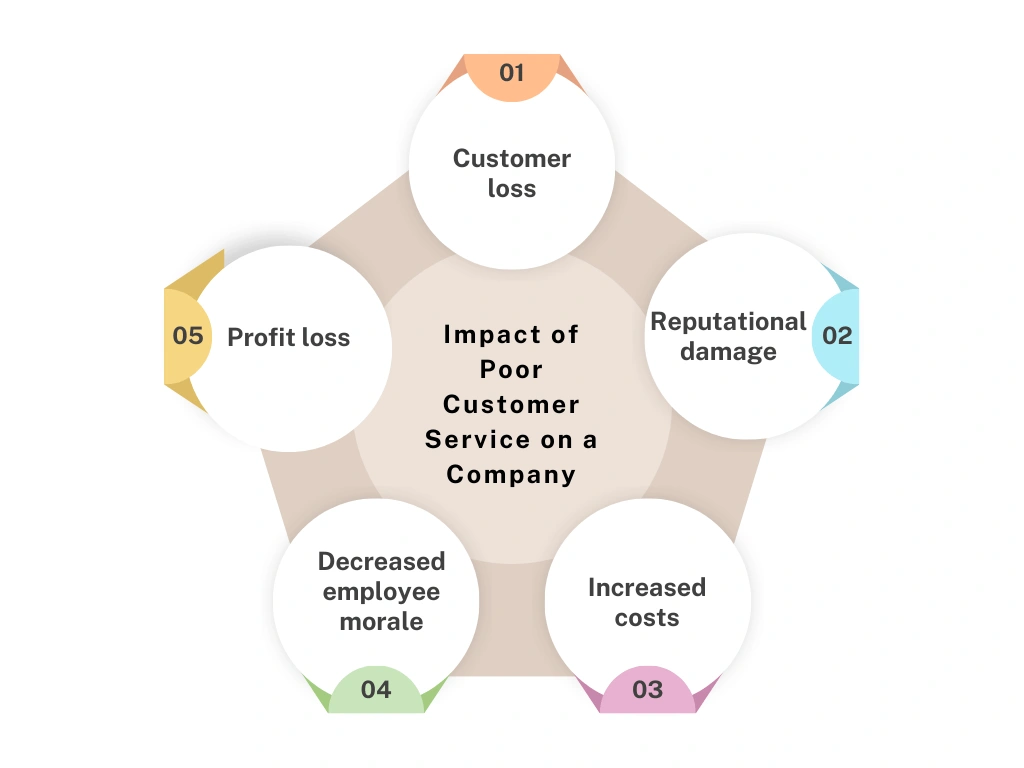
Customer loss
When customers receive unsatisfactory customer service from a company, they are usually inclined to switch to other businesses.
This change negatively affects the company by increasing the customer churn rate, decreasing the customer retention rate, and harming the company’s bottom line.
Reputational damage
It can be challenging for a business to overcome a reputation for poor customer service. Online reviews and word of mouth that are negative spread more readily than praise.
An unfavorable perception will discourage customers and other businesses from partnering or associating with your company and brand.
Other companies will be concerned about potential harm to their own reputation and doubts regarding your ability to deliver satisfactory outcomes.
Increased costs
If a business fails to provide satisfactory customer service, it is likely to experience numerous product returns, refund requests, and exchanges.
These can be brought about by miscommunication and misunderstanding between customers and the support team, and lead to substantial financial challenges for the business.
Decreased employee morale
Poor customer service can result in a company’s top employees feeling overwhelmed from dealing with disgruntled and irritated customers.
This situation can create an imbalance within the team, where competent customer support agents cover for less effective ones.
Profit loss
Bad customer service usually leads to a decrease in customers, resulting in reduced sales and profits for the business.
This can trigger a destructive cycle where a company attempts to save money by eliminating staff or customer service training, which in turn drives down service quality, leading to even more profit loss.
Examples of the worst customer service practices and their solutions
In the field of customer service, there are certain practices that can lead to an unsatisfactory experience for customers.
Examples of bad customer service
-
-
- Incompetent customer support teams
- Keeping customers on hold for too long
- Inadequate communication channels
- Ignoring customer feedback
- Transferring customers from agent to agent
- Lacking empathy
- Hanging up on angry customers
- Dismissing customer problems
- Using language that demotivates the customer
- Asking customers to repeat themselves
- Lack of personalization
-
Here are some examples of poor customer service and their possible solutions:
1. Incompetent customer support teams
Support teams that fail to address customer issues or complaints promptly and effectively are inefficient.
The inefficiency could be due to poor management, insufficient training, lack of knowledge or resources, or a combination of all of these.
This leads to a bad customer experience and the possibility of lost business.
Solutions
- Train your support team: Ensure that your customer service team is well trained to respond promptly and confidently. Equip it with essential resources and the knowledge required to effectively address customer inquiries.
- Provide self-help tools: Self-help tools, such as an internal knowledge base, enable customers to independently find solutions. These tools enhance the customer service experience and reduce the workload of support teams.
2. Keeping customers on hold for too long
Being put on hold is a common experience when clients contact a customer service team.
However, if they are kept on hold for a long time, it can be a source of frustration for customers as they feel their time is not respected.
Solutions
- Prioritization: Implement a system that prioritizes queries based on their urgency, ensuring that more urgent queries are handled first. This can be done by setting up required response and resolution times through an SLA and establishing ticket priorities.
- Monitor and optimize processes: Regularly review customer service workflow processes to identify and rectify any inefficiencies that contribute to long wait times.
- Use automated responses: Utilize automated responses, such as canned responses, email templates, and automated SLA reminders to acknowledge customer inquiries and provide estimated wait times.
3. Inadequate communication channels
Most customers are accustomed to having multiple options to access a company’s support or customer service such as live chat, phone calls, email, among others.

If a company only offers support through phone calls, it is neglecting many customers’ preferred communication channels.
Solutions
- Offer multiple communication channels: Providing multiple channels for customers to reach out to your business, such as community forums, email, social media, and web portals enhances the customer experience. You can manage customer conversations from all the communication channels provided in a unified inbox with an omnichannel support for smooth support experiences.
4. Ignoring customer feedback
Most businesses provide several platforms for customers to provide feedback.
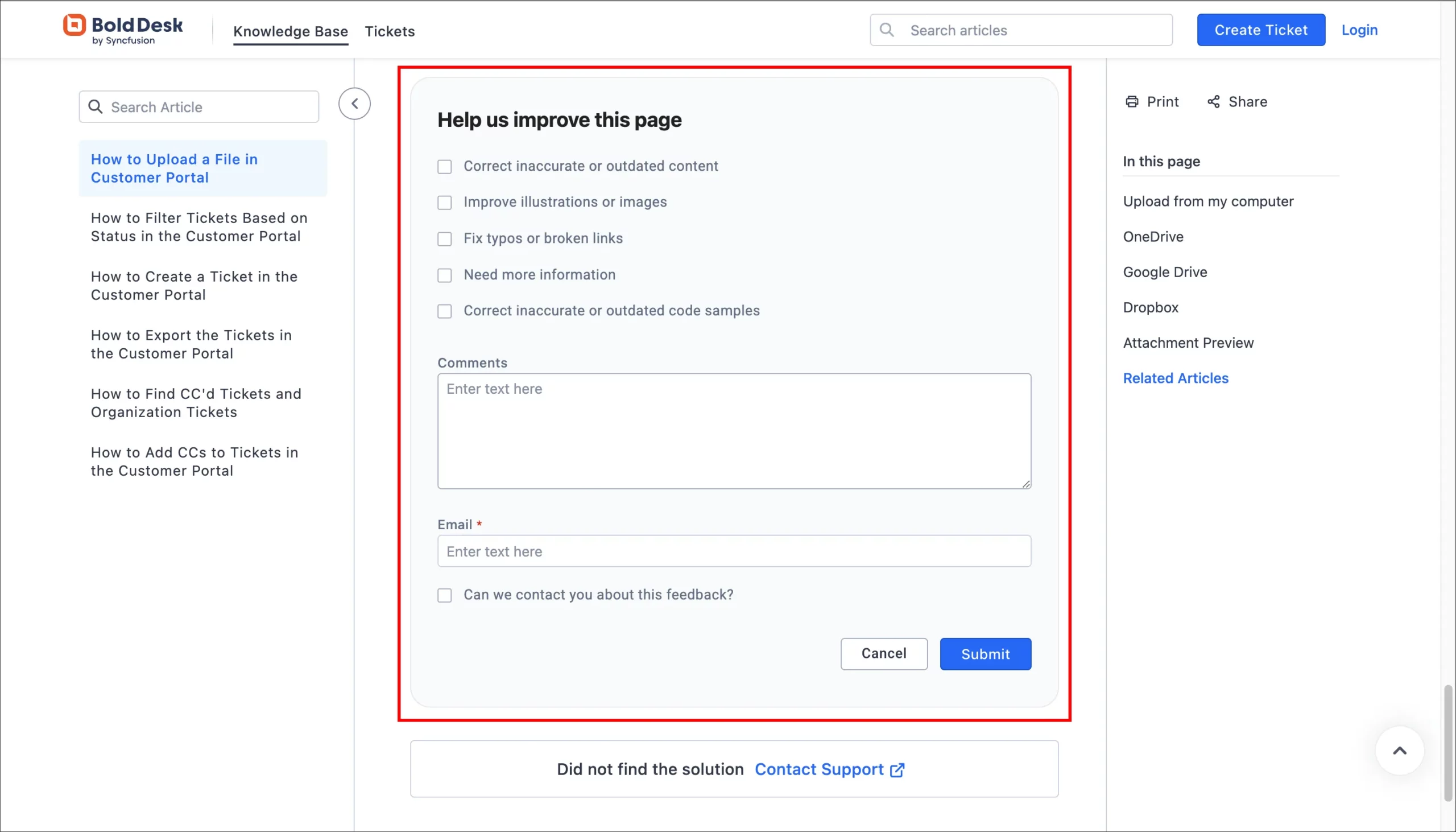
Ignoring customer complaints is more detrimental than acknowledging them, as it not only demonstrates a lack of concern for customer feedback, but also implies a disregard for the customer’s role in the success of the company.
Solutions
- Follow up on customer feedback: Considering and acting on feedback from customers directly results in improvements to your customer service. Acknowledgement alone may make the customer feel better in the short term, but benefits neither party in the long run.
- Monitor interactions: Companies must ensure that each customer interaction progresses toward a positive outcome for both the customer and themselves. Social media interactions in particular require close attention because anyone can see them.
- Track customer satisfaction metrics: Businesses should collect data about their customers’ experiences and identify areas where they can improve their brand.
5. Transferring customers from agent to agent
Transferring customers from agent to agent to resolve an issue can indicate a worst customer service in a company, especially if it’s a frequent occurrence.
Customers encountering such situations regularly will feel frustrated and may look to competing businesses for help.
Solutions
- Utilize help desk software: Comprehensive help desk software can streamline support workflows and keep track of customers’ previous issues, making it easier for agents to help them.
- Implement automated ticket routing: With automated ticket routing, customer inquiries are directed to the right agent from the start, reducing the likelihood of transfers and leading to quicker resolutions.
6. Lacking empathy
Empathy and politeness are important qualities in customer service. The absence of these qualities in customer service interactions can leave customers feeling frustrated and undervalued by your company.
Solutions
- Active listening: This is crucial in customer service. It involves agents giving customers their full attention, remembering important details and responding in a way that shows the customers that their feelings are recognized and understood. By practicing active listening, agents are more empathetic to customer issues, and can better understand and solve them.
- Training on empathy: Agents can be trained to improve soft skills like empathy and politeness. Role-playing exercises are especially effective for practicing responses to different scenarios.
- Create a culture that values empathy: Recognize and reward empathetic behavior, share positive feedback from customers, and lead by example.
7. Hanging up on angry customers
It is never appropriate to hang up on a customer as a way of dealing with a challenging situation. The customer is upset for a reason. Hanging up will make them feel neglected, disrespected, and worsen the situation.
Solutions
- Train the support team on conflict resolution: Provide your team with training on effectively managing challenging circumstances and resolving conflicts without resorting to abruptly ending conversations.
- Supervisor intervention: If a customer is inconsolable, it might be necessary for a supervisor or manager to intervene. Supervisor involvement can help resolve the issue and show the customer that their concerns are taken seriously.
8. Dismissing customer problems
More than anything, customers want their issues to be acknowledged and efficiently addressed. Failure to meet this expectation can make customers feel overlooked and undervalued.
Even if the customer’s problem is due to a mistake of their own, it is in your best business interest to guide the customer to a solution.
Solutions
- Acknowledge customers’ problems: When a customer contacts your business with a problem or complaint, it is important to validate their issue and show empathy. This makes the customer feel heard and valued and sets the stage for a positive resolution. Customers’ issues can be acknowledged in the following ways:
- Recognize the challenges they are facing in writing or verbally.
- Apologize for any inconveniences.
- Let the customer know you are going to do everything in your power to help them.
9. Using language that demotivates the customer
The language used in customer service interactions can have a big impact on the customer experience.
If language is used in a way that discourages or diminishes the customer, it can result in the customer feeling frustrated and unappreciated.
Solutions
- Use the right language: Use positive language and steer clear of phrases that might discourage or blame the customer for their issue.
10. Asking customers to repeat themselves
Asking customers to repeat themselves results in frustration and an unsatisfactory support experience. It creates the perception that the customer service representative is disregarding or undervaluing the customer’s time.
Solutions
- Take notes: Encourage support agents to make notes during customer conversations to help them remember important details and minimize the need for repetition.
- Record conversations: With the consent of your customers, record all interactions. This allows your customer service representatives to revisit discussions as needed, reducing the burden on customers to repeatedly provide the same information.
11. Lack of personalization
Lack of personalization occurs when customer interactions feel generic, impersonal, and disconnected from their individual needs or history with the company.
Customers often expect customer support to have access to their preferences, previous purchases, or past interactions, and when these expectations are unmet, they can experience dissatisfaction and a sense of being undervalued.
Solutions
- Tailor communications: Personalize emails, messages, and responses based on customer preferences and past interactions. For instance, greet customers by name, and if appropriate, reference their previous interactions to make them feel recognized.
- Train agents to personalize conversations: Provide training that emphasizes empathy and personalization. Encourage agents to ask about customers’ individual needs and offer recommendations or solutions based on their unique circumstances.
End bad customer service in your company today!
Bad customer service harms businesses. Therefore, companies must prioritize delivering excellent customer service and constantly solicit feedback for improvement.
By providing outstanding customer service, businesses can hold on to their customers, establish a positive image, and enhance their profitability.
If you’re looking for ways to improve your customer service, try BoldDesk by Syncfusion. You can start a 15-day free trial or book a live demo. Contact BoldDesk support for more information.
Related articles



 Email Ticketing System
Email Ticketing System